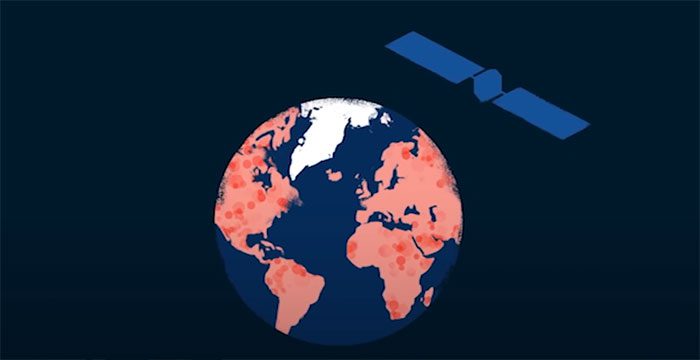An artificial satellite orbits the Earth, scanning and filtering the wavelengths reflected from the planet’s surface. Through this, scientists have discovered an anomaly regarding a wavelength emitted from a mysterious source.
The researchers tried to analyze this wavelength and found that our planet is enveloped in a variety of shades of red.
(Video: Tienphong)
Furthermore, this phenomenon does not correspond to densely populated areas, indicating that it is not human-made. In fact, it emanates from regions rich in vegetation: the Amazon River basin, northern evergreen forests, and croplands in the Midwest of the United States all exhibit a vibrant red hue.
As we know, plants and other organisms utilize light for growth through the process of photosynthesis. Plants interact with incoming light by re-emitting it at different wavelengths, producing what is known as chlorophyll fluorescence.
During photosynthesis, the excited electrons of chlorophyll undergo a series of chemical reactions. However, when some excited electrons return to their ground state, they release energy in the form of light. Generally, about 1% of the absorbed light is re-emitted as wavelengths at the red end of the spectrum.
This amount is so small that it cannot be seen with the naked eye. Yet, plants worldwide are fluorescing as they photosynthesize. This phenomenon explains the mysterious red light observed on Earth from satellite observations.

The Earth is covered with a variety of shades of red.
This is a significant breakthrough. Monitoring chlorophyll fluorescence from space allows us to observe this planet breathing in real-time and track the health of ecosystems worldwide.
Previously, researchers used the level of greenness as the primary estimate for plant health. However, this measure can be unreliable as plants may change color or lose leaves. In contrast, chlorophyll fluorescence is a direct measure of photosynthetic activity.
This can help us infer the amount of oxygen being released and how much carbon is being absorbed within a given system. A decrease in chlorophyll fluorescence may also occur before clear signs of plant stress appear, allowing for timely intervention.





















































